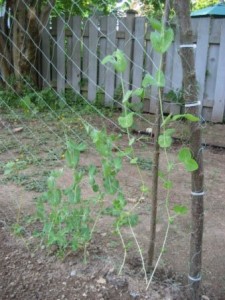I stopped in at one of my local grocery stores the other day, the Murrayville Marketplace IGA, to pick up some fresh ginger and boy did I get an earful more. It was awesome. Not only did I get the ginger I came for, I also found local kale on special “grown right around the corner” and more information on veggies and fruit than I ever thought possible in a 7.5 minute span. Warren, the produce manager, was a wealth of information. This guy is jazzed about produce and talks really, really fast.
 It started with the kale, which looked great so I took two and was having trouble stuffing into the bag. That’s when Warren offered to help and advised it was local, local. As in right here, local. That, of course makes me happy. Which led to a comment about the lemons, which having been advertised as coming from South Africa, did not make me happy. Whereupon I was advised that they weren’t from South Africa, they were actually from California. Which since lemons don’t grow here or anywhere near here, is as local as I’m ever going to get and significantly more local than South Africa. Which makes me happy.
It started with the kale, which looked great so I took two and was having trouble stuffing into the bag. That’s when Warren offered to help and advised it was local, local. As in right here, local. That, of course makes me happy. Which led to a comment about the lemons, which having been advertised as coming from South Africa, did not make me happy. Whereupon I was advised that they weren’t from South Africa, they were actually from California. Which since lemons don’t grow here or anywhere near here, is as local as I’m ever going to get and significantly more local than South Africa. Which makes me happy.
I’m not exactly sure how we got from California lemons to Hawaiian avocados, but from there he solved a dilemma I’ve been having with said vegetable — avocados in general, not the Hawaiian kind specifically.
Now, you know I love local and do what I can to make food choices that fit the criteria. But I do have my weaknesses and avocados are one. However, I can’t seem to get them to ripen lately. Especially when I buy them from the big box warehouse store — you know the one. They turn brown on the outside but are rock hard on the inside. “What gives?”
That’s when I learned the trick to ripening avocados. Warren told me all fruit gives off ethylene gas as it ripens and if you want to ripen something you just increase the amount of ethylene in its vicinity. His suggestion: put a banana or two in a plastic bag along with the unripened avocados, seal it, and presto, in a day or two you’ve got ripe avocados. Bananas give off a lot of ethylene so they are the perfect “gassing” agent. Also, heat helps so put the bag on top of the fridge. However, do keep an eye on them as too much of a good thing can cause “burning” or uneven ripening. If it gets too gassy and hot, just pop a hole or two in the bag.
Now, gassing one’s fruit sounds very chemical-ish and therefore nasty, but a little research turned up that it’s actually an ancient, naturally occurring practice:
“Ethylene has been used since the ancient Egyptians, who would gash figs in order to stimulate ripening (wounding stimulates ethylene production by plant tissues). The ancient Chinese would burn incense in closed rooms to enhance the ripening of pears.” Source: Wikipedia
Of course, today’s process isn’t quite as natural as when the Egyptians did it, as it’s done on a mass scale, but it IS how you get ripe fruit that comes from great distances. So if you want bananas that aren’t mush by the time you get them, you’ll be eating ones that have been gassed.
After that little exploration into the world of fruit and veg, I’m pondering what other dilemmas Warren may be able to solve and thinking up some really tough questions so I can go in and test him. I’ll let you know how it goes.
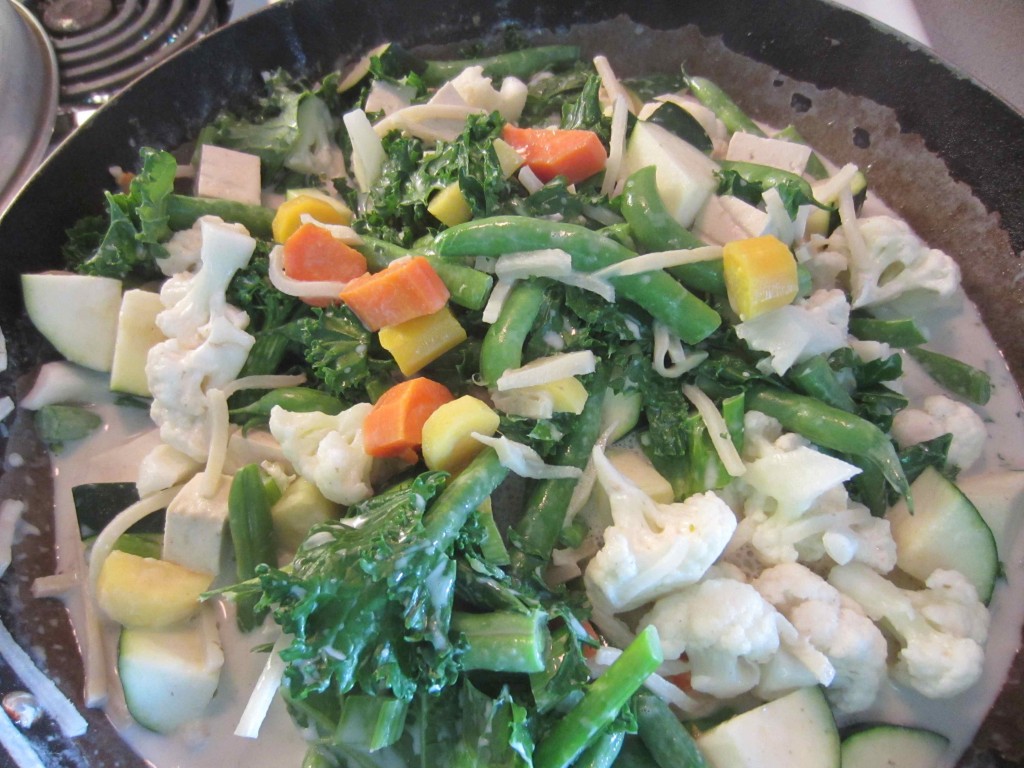
Thai Green Curry: Green beans and broccoli from the garden, regular and heritage carrots from the farmers market, and “grown around the corner” kale. I forgot to include the fresh ginger.

 I am pleased as punch. My backyard garden on borrowed land — whether because of, or in spite of my attempts — looks awesome. I’ve been eating
I am pleased as punch. My backyard garden on borrowed land — whether because of, or in spite of my attempts — looks awesome. I’ve been eating 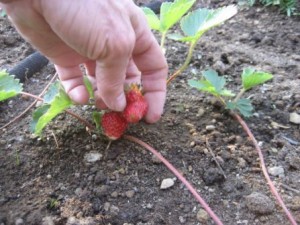 I haven’t had much success with some veggies, such as carrots and
I haven’t had much success with some veggies, such as carrots and 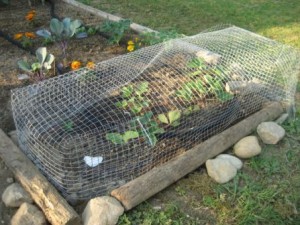
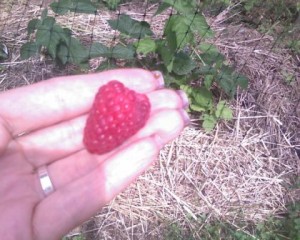 Along with the bounty of broccoli the first week in July, I also harvested a huge bag of
Along with the bounty of broccoli the first week in July, I also harvested a huge bag of 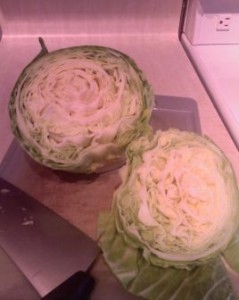 The cabbage I harvested was a full 6″ in diameter once all the outer, ratty looking leaves were removed. That’s bigger than it sounds! The thing that surprised me is that it’s crisp, juicy and crunchy compared to the ones I buy at the supermarket.
The cabbage I harvested was a full 6″ in diameter once all the outer, ratty looking leaves were removed. That’s bigger than it sounds! The thing that surprised me is that it’s crisp, juicy and crunchy compared to the ones I buy at the supermarket. 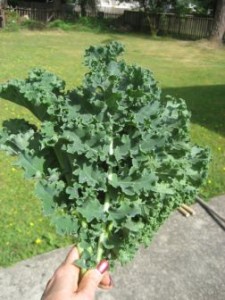 I’ve only ever had kale once before, at a restaurant, and it was slightly bitter. I didn’t dare tell the Scientist, who has a severe aversion to anything that might have even a remote chance of being bitter.
I’ve only ever had kale once before, at a restaurant, and it was slightly bitter. I didn’t dare tell the Scientist, who has a severe aversion to anything that might have even a remote chance of being bitter.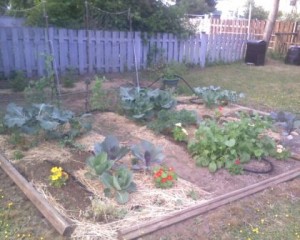 In a nutshell, stuff is growing! This in itself is a wonderful thing, which I don’t take for granted. I mean, if it were up to my expertise, the seeds I planted would be sunk. Fortunately, they know what to do without much help from me.
In a nutshell, stuff is growing! This in itself is a wonderful thing, which I don’t take for granted. I mean, if it were up to my expertise, the seeds I planted would be sunk. Fortunately, they know what to do without much help from me.
